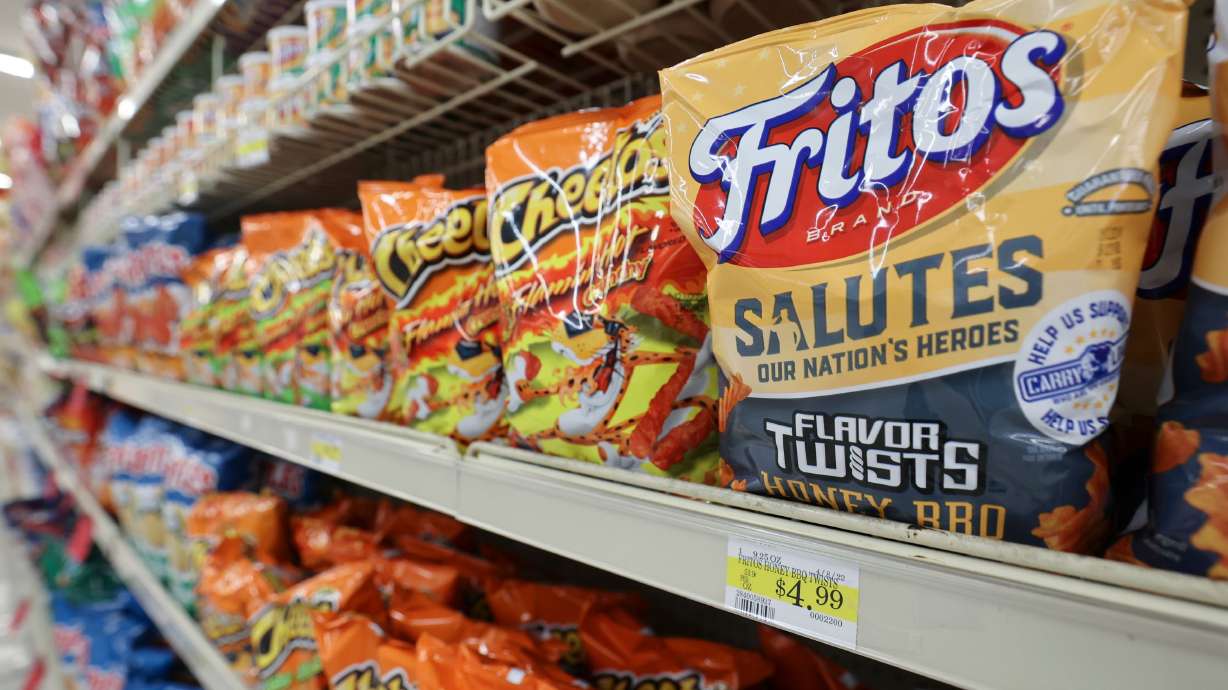Estimated read time: 3-4 minutes
This archived news story is available only for your personal, non-commercial use. Information in the story may be outdated or superseded by additional information. Reading or replaying the story in its archived form does not constitute a republication of the story.
SALT LAKE CITY — The overall costs of goods and services may have eased a bit in August, according to the latest U.S. inflation report, but food remains a pricey outlier and just saw the biggest year-over-year jump in more than four decades.
Overall food prices were up 11.4% in August, the biggest annual jump since 1979, according to the U.S. Department of Labor. Grocery prices rose 13.5% last month over the same time a year ago.
A closer look at food categories tracked by the Labor Department shows across-the-board price increases since this time last year, but some items have seen steep, double-digit increases including eggs up almost 40% in the last year, poultry up about 17%, dairy products up more than 16%, and cereal or bakery products also up over 16% since 2021.
Why are food prices so high?
Industry experts say avian flu outbreaks have played a role in driving up both the cost of eggs and poultry meat by reducing supplies alongside heightened demand for poultry.
Per a report from MarketWatch, people have turned to chicken instead of typically higher-priced beef, according to Brian Earnest, lead economist for animal protein at CoBank, a national cooperative bank serving industries across rural America.
Fruit and vegetable prices were up 9.4% in August over the same time last year. Ongoing historic drought conditions and record-high temperatures this summer in the western U.S. are playing a role in those price increases.
Earlier this week, the Wall Street Journal reported that high temperatures in the West are hitting the produce industry, damaging crops, shrinking shipments and leaving fewer leafy greens and fruits on supermarket shelves.
The price of raising and growing food in the U.S. is also on the rise.
Quartz reports U.S. food production costs are up 11% over last year to $437 billion with fertilizers, which are energy-intensive to manufacture, and pesticides experiencing some of the biggest price increases.
Some of this is driven by the Russia-Ukraine war, which has disrupted grain and natural gas shipments, Quartz reported. Russia is also a major producer of fertilizers, which may be affected by sanctions.
When will food prices come down?
While easing gas prices will help bring down some of the costs related to producing and distributing food supplies, experts say it's hard to predict how the market will respond to ongoing global conflict and the impacts of extreme weather patterns.
"It doesn't mean that they're not going to come down," David Ortega, professor at Michigan State University's department of agricultural, food, and resource economics, told Quartz. "It's just that it's going to take longer for them to come down to much more reasonable levels, especially now, because there's so many factors at play."
According to a Reuters report, the World Bank forecasts wheat prices could rise more than 40% in 2022. The bank expects agricultural prices to fall in 2023 versus 2022. But that depends on increased crop supplies from Argentina, Brazil and the United States — by no means guaranteed.
The sharp rise in fertilizer prices, as countries avoid buying from major producers Russia and its ally Belarus, could discourage farmers from applying adequate crop nutrients to their fields, per Reuters.
That could bring down yields and result in lower production, prolonging the crisis. As the climate warms, extreme weather is becoming more common — posing another risk to crop production.









